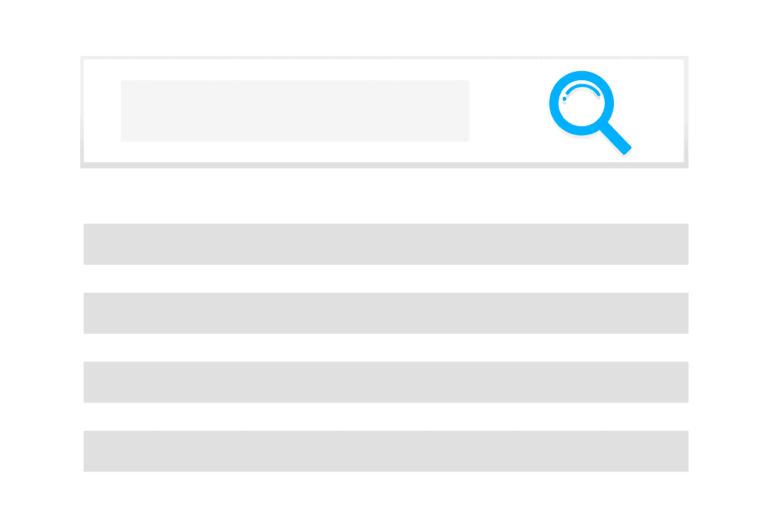Link shorteners are not new, and they have been around for a long time. However, not everyone knows how to use them, and many new bloggers and marketers are confused about using them.
There are a variety of link shorteners available, and you can use them for different purposes.
In this article, we will discuss what link shorteners are and how to use them for different purposes.
1. Use link shorteners to track your traffic
One of the biggest benefits of using a link shortener is the ability to track traffic.
When you shorten a URL, you can see how many people have clicked on it, where they came from, and even how many times they’ve visited your website.
This is incredibly valuable information that can help you make better decisions about your marketing efforts.
2. Use link shorteners to track offline marketing
Link shorteners can also be a great tool to track your offline marketing efforts. By using a link shortener to create a unique URL for your offline marketing materials, you can track how many people are clicking on your links and visiting your website.
This can be a great way to see if your offline marketing efforts are paying off, and it can also help you to identify any areas where you may need to make improvements. For example, if you’re not getting many clicks on your links, you may need to rethink your call to action or offer.
3. Use link shorteners to track your social media traffic
Social media traffic can be tricky to track. When you share a link on social media, it can be difficult to know how many people clicked on it, and where they came from.
Link shorteners can help you track your social media traffic. When you use a link shortener to create a shortened link, you can track how many people clicked on the link, and where they came from.
This can be very useful information. For example, if you’re running a social media campaign, you can use link shorteners to track how many people are clicking on your links. If you see that a lot of people are clicking on your links, you know that your campaign is working.
4. Use link shorteners to track your email marketing
If you’re sending out a lot of marketing emails, you may want to use a link shortener to track your click-through rates.
This will help you see which links are getting the most clicks, and which are not. You can then use this information to improve your email marketing campaigns and get better results.
5. Use link shorteners to track your content marketing
Content marketing is a great way to get people to your website. But how do you know which pieces of content are driving the most traffic?
By using link shorteners, you can create different links for each piece of content you share on social media, including a marketing one-pager for concise campaign overviews. Then you can track how many people click on each link and which pieces of content are getting the most clicks.
This will help you see which topics your audience is most interested in and help you create more targeted content in the future.
Additionally, using KPIs to measure the success of your link shorteners will provide valuable insights into your content’s performance.
6. Use link shorteners to track your affiliate traffic
When you’re sharing affiliate links, it’s important to track your traffic so you can see which links are performing well and which aren’t.
Link shorteners make it easy to track your affiliate traffic. Just create a short link for your affiliate offer and then track the clicks on that link.
You can also use link shorteners to track your sales. Just add a unique tracking code to your short link and then track the sales that come through that link. This will help you see which of your affiliate links are driving the most sales and which ones aren’t.
7. Use link shorteners to track your paid traffic
If you’re running ads on social media, you can use link shorteners to track your paid traffic.
This is a great way to see how many people are clicking on your ads and how many are converting into customers.
You can also use link shorteners to see which social media platforms are driving the most traffic to your website.
This can help you make more informed decisions about where to spend your ad budget.
8. Use link shorteners to track your YouTube traffic
If you’re using YouTube to grow your business, you’re going to want to use a link shortener.
YouTube traffic is some of the best traffic you can get. It’s high-quality, targeted, and already interested in what you have to offer.
But if you’re not using a link shortener, you’re missing out on a lot of valuable data.
By using a link shortener, you can track how many people are clicking on your YouTube links, where they’re coming from, and even what time of day they’re most likely to click.
This information is invaluable when it comes to growing your YouTube channel and your business.
9. Use link shorteners to track your retargeting
Retargeting is a form of online advertising that allows you to target your ads at people who have already visited your website.
This is a great way to make sure your ads are seen by people who are already interested in your products or services.
By using a link shortener, you can track how many people are clicking on your retargeting ads and how many of those people are converting.
This will help you determine if your retargeting campaign is working and if you need to make any changes.
10. Use link shorteners to track your call to actions
If you are using call to actions in your social media posts, you can use link shorteners to track how many people are clicking on your CTA and where they are coming from.
You can create a short link for your CTA and then track how many people are clicking on it and where they are coming from.
This can help you to see which of your social media posts are driving the most traffic to your website and which ones are not.
Similarities and differences between link shorteners and other URL management tools
Link shorteners and other URL management tools often overlap in functionality, but each offers unique features tailored to specific needs. Here’s a detailed comparison to help you understand where they align and diverge:
1. Purpose
- Similarities: Both link shorteners and URL management tools help improve URL accessibility and shareability, ensuring that users can easily navigate to the intended destination.
- Differences: Link shorteners focus on reducing URL length for easier sharing, especially on platforms with character limits. URL management tools, however, may provide additional features like domain masking or advanced analytics beyond basic click tracking.
2. Tracking capabilities
- Similarities: Both tools offer tracking to measure the performance of URLs, including click-through rates and traffic sources.
- Differences: Link shorteners typically focus on fundamental metrics, while URL management tools can include more advanced analytics like user segmentation, device types, and conversion tracking.
3. Branding options
- Similarities: Both can support custom branding to maintain a professional image and strengthen brand recognition.
- Differences: Link shorteners often allow users to create branded links (e.g., yourbrand.link/example), but URL management tools can integrate with custom domains, offering broader control over branding elements.
4. Ease of use
- Similarities: Both are designed to simplify URL handling, with intuitive interfaces that make them accessible even for beginners.
- Differences: Link shorteners prioritize speed and simplicity, often requiring just a click to generate a shortened link. URL management tools, while user-friendly, may involve a more complex setup due to their broader functionality.
5. Use cases
- Similarities: Both are widely used for digital marketing, email campaigns, and social media to enhance user engagement and measure effectiveness.
- Differences: Link shorteners are ideal for quick sharing on platforms with character limits (e.g., Twitter), while URL management tools are better suited for managing large-scale campaigns across multiple channels.
By understanding these similarities and differences, you can decide which tool fits your specific needs. For quick sharing and tracking, link shorteners are excellent. If you need a more comprehensive solution, consider URL management tools.
Conclusion
We hope that this blog post helped you to understand how to use link shorteners and what the benefits of using them are. If you have any tips or tricks on how to use link shorteners, feel free to share them in the comments below.



